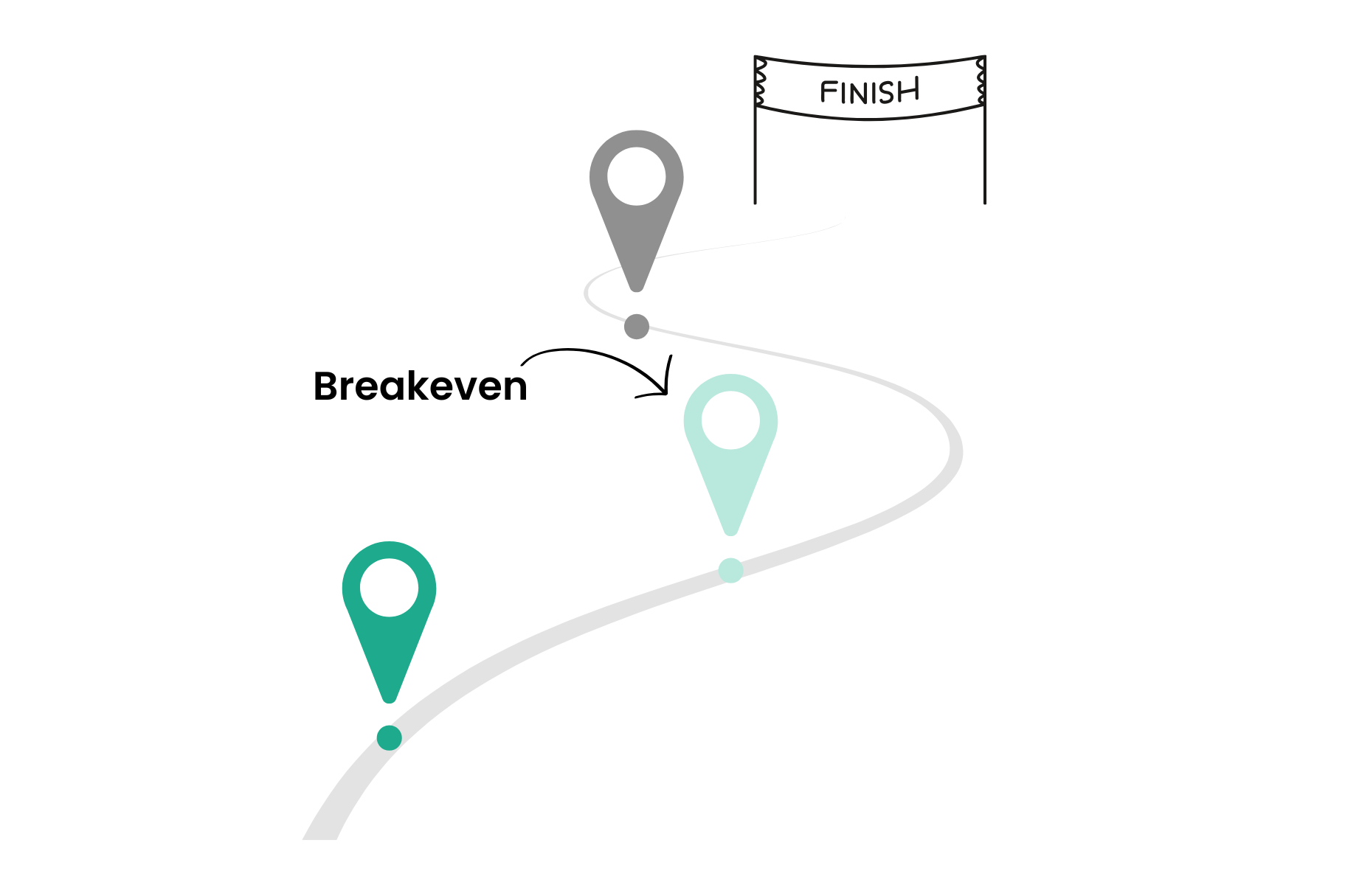How Long Does it Take for a Company to be Profitable?

In this post, we’ll explore how long it typically takes a business to become profitable, what factors influence that timeline, and how to accelerate the journey. Whether you’re leading a new venture or scaling an existing business, this is the question that keeps founders up at night: When will this business start paying me back?
Key Takeaways
-
Most businesses take 18–36 months to reach profitability—but the range varies by model and industry
-
Profit depends more on structure, margin, and discipline than on size
-
With clear targets and strong cash flow systems, you can reach profit faster
-
Burning cash isn’t bad—unless you’re doing it without a plan
-
Profit isn’t a milestone—it’s a habit that starts with the right foundation
There’s No One-Size-Fits-All Timeline
According to industry research, most small businesses take two to three years to become profitable. But that’s an average—not a rule. Some companies turn a profit in their first year. Others take five years or longer.
The real answer is: it depends. On your cost structure. Your pricing model. Your team. Your customer acquisition strategy. Your capital. Your discipline.
At Coltivar, we’ve worked with companies that hit profitability in 6 months—and others that ran negative for 4 years before finding product-market fit. Both can work. But only if there’s a financial roadmap guiding the way.
What Really Determines How Fast You Reach Profit
Let’s break it down. These are the levers that impact your time to profitability:
1. Upfront Investment Requirements
If your business requires heavy startup costs—equipment, tech, talent, inventory—you’re starting in a hole. That means it’ll take longer to break even.
2. Fixed vs. Variable Cost Structure
Lean, flexible models (like digital services) can scale profit faster. Capital-intensive businesses (like manufacturing or construction) need more volume before profits kick in.
3. Margins and Pricing Strategy
You can’t save your way to profit. If your gross margin is too tight or your prices are misaligned with value, profit will stay out of reach.
4. Customer Acquisition Costs (CAC)
High CAC paired with low retention creates a long path to break even. Smart, efficient acquisition shortens that timeline significantly.
5. Discipline in Execution
The companies that hit profitability fastest are the ones with strong financial controls, focused execution, and the courage to say no to distractions.
Profitability Benchmarks by Industry
Here’s a quick look at typical profitability timelines by business type:

Again, these are just benchmarks. Your business might beat the average—or take longer—depending on how you’re managing your growth strategy.
Can You Be Profitable Faster?
Absolutely. Many companies could reach profitability faster if they focused on the right levers early. Here’s how we help Coltivar clients do it:
-
Design pricing from the inside out. Start with your cost structure, target margin, and desired reinvestment rate—then set prices accordingly
-
Control fixed costs. Avoid bloated overhead early. Build lean, then layer on as revenue scales
-
Use a 13-week cash forecast. Stay ahead of surprises and make adjustments before it’s too late
-
Focus on high-margin clients. Not all revenue is equal. Double down where margin lives
-
Avoid shiny object syndrome. Stick to your core value proposition and channel until it pays
Profit isn’t just a financial result—it’s a set of habits, systems, and decisions repeated over time
Breakeven Is a Milestone—But Not the Finish Line

Reaching profitability doesn’t mean the hard part is over. It just means you’ve built a machine that works. Now the question becomes: Can you grow profitably?
A business that generates profit at $3 million in revenue can just as easily lose it again at $10 million if systems, pricing, and cost discipline don’t scale with growth.
That’s why we push founders to define what “profitable growth” looks like—not just once, but quarter by quarter. The companies that win are the ones that make profit a discipline, not a moment.
Final Word: Profitability Is Earned, Not Assumed
How long does it take to be profitable? As long as it takes to get the foundation right. But the moment you take control of your financial model—when you stop guessing and start forecasting—you start accelerating that timeline.
You don’t have to wait years to see a return. With the right moves, you can shrink the gap between investment and income, and start compounding value faster.
Profitability is possible—sooner than you think.
Want help building your path to profit?
Book a Strategy Review and let’s build a plan that makes the numbers work.






